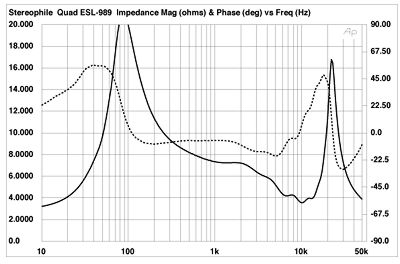If this was posted before, please go ahead and kill the thread... But here's a thought-provoking blog post by Atma-Sphere on why OTL tubes sound better with wild-impedance speakers (e.g. electrostatics) than solid state, and what solid state has to do to compensate:
Would love to see reaction to this... For example, exactly how does negative feedback relate to constant power, i.e. how does it make an amplifier not sensitive to wild impedance fluctuations?
On a related note, I had posted on a similar thread that Soulution presumably discovered that a lot of negative feedback is not a problem as long as you can build ultra-fast circuits to handle it, because they claim that the smearing of negative feedback is otherwise very evident. So is this perhaps why such ultra-fast designs (Soulution, Spectral, FM Acoustics) presumably sound so good?
Let's say you have a high quality 150/channel transistor amp. 150 watts into 8 ohms, a reasonable amount of power, but if you have a four Ohm speaker its 300 watts. Nice. Into 2 Ohms, if the amp doesn't blow up or current limit, 600 watts. So what does the amp produce driving 16 Ohms? 75 watts. Into 32 Ohms its only 35 watts! This could result in serious problems were the speaker a typical electrostatic, where such impedances are common in the bass frequencies. This explains why transistor amplifiers are usually such a poor match for electrostatic speakers.
This is what the right OTL can do into these impedances: 150 watts into 8 ohms, 145 into four (less than 1/2db difference), about 80 watts into 2 ohms, but into 16 we have 149 watts, into 32 ohms 145 watts- so you see that as long as the speaker load is moderately well behaved, this OTL example produces far more linear power over the same range of impedances, whereas the transistor amp is quite simply incapable of being linear at all! Why?
When a recording is made, it is assumed that a linear system is to be used so that it is capable of recording the same energy at all frequencies. When we play it back, for best results the playback should be the same at all frequencies, too. If there are variations in the speaker impedance, this will not be possible with a transistor amplifier unless it has a lot of negative feedback (which most of them do), which has the additional effect of decreasing bass impact, restricting dynamics, foreshortening soundstage depth and increasing odd-ordered harmonic distortion. Thus there is no way that a transistor amp can be described as linear if it is subject to these problems and that is one of the reasons why transistor amps produce so many amusical colorations. The reason has to do with the vanishingly small output impedance of the transistor amp (here's some myth bashing for you). The result is that the transistor amp has what is called a constant voltage characteristic, not constant power, which is of course what a power amp should do!
So, despite the fact that smaller OTL amplifiers don't like four ohm speakers, they are quite capable of giving you a more even power characteristic (read: flatter frequency response, all other things being equal), especially on a speaker with a wild impedance curve.
Would love to see reaction to this... For example, exactly how does negative feedback relate to constant power, i.e. how does it make an amplifier not sensitive to wild impedance fluctuations?
On a related note, I had posted on a similar thread that Soulution presumably discovered that a lot of negative feedback is not a problem as long as you can build ultra-fast circuits to handle it, because they claim that the smearing of negative feedback is otherwise very evident. So is this perhaps why such ultra-fast designs (Soulution, Spectral, FM Acoustics) presumably sound so good?






















